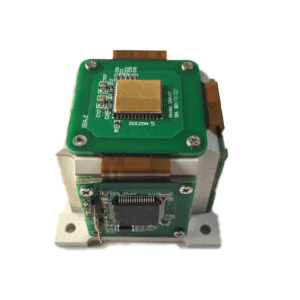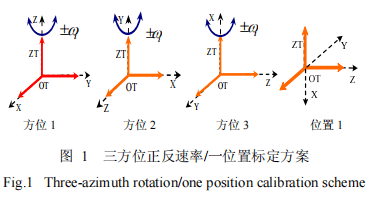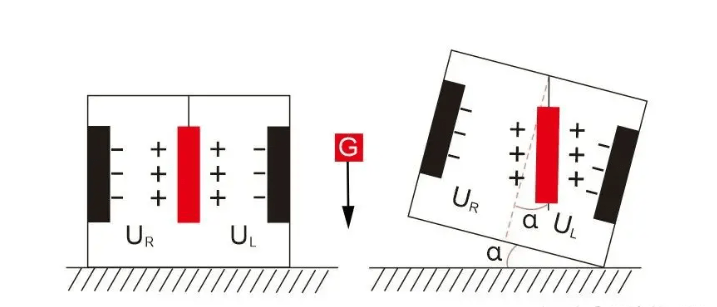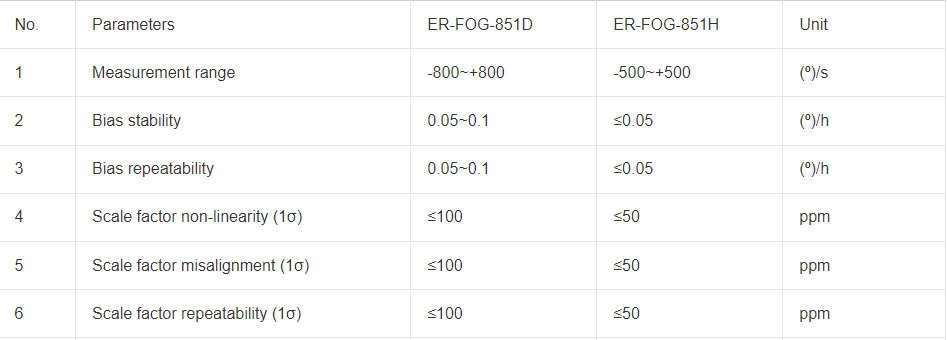Like ring laser gyro, fiber optic gyro has the advantages of no mechanical moving parts, no preheating time, insensitive acceleration, wide dynamic range, digital output and small size. In addition, fiber optic gyro also overcomes the fatal shortcomings of ring laser gyro such as high cost and blocking phenomenon.
Fiber optic gyro is a kind of optical fiber sensor used in inertial navigation.
Because it has no moving parts - high-speed rotor, called solid state gyroscope. This new all-solid gyroscope will become the leading product in the future and has a wide range of development prospects and application prospects.
1. Fiber optic gyro classification
According to the working principle, fiber optic gyroscope can be divided into interferometric fiber optic gyro (I-FOG), resonant fiber optic gyro (R-FOG) and stimulated Brillouin scattering fiber optic gyroscope (B-FOG). At present, the most mature fiber optic gyro is the interferometric fiber optic gyroscope (that is, the first generation of fiber optic gyroscope), which is the most widely used. It uses multi-turn optical fiber coil to enhance SAGNAC effect. A double-beam ring interferometer composed of multi-turn single-mode optical fiber coil can provide high accuracy, but also will inevitably make the overall structure more complicated.
Fiber optic gyros are divided into open ring fiber optic gyroscopes and closed loop fiber optic gyros according to the type of loop. Open-loop fiber optic gyro without feedback, directly detect the optical output, save many complex optical and circuit structure, has the advantages of simple structure, cheap price, high reliability, low power consumption, the disadvantage is the input-output linearity is poor, small dynamic range, mainly used as an Angle sensor. The basic structure of an open-loop interferometric fiber optic gyro is a ring dual-beam interferometer. It is mainly used for occasions where the accuracy is not high and the volume is small.
2. Status and future of fiber optic gyroscope
With the rapid development of fiber optic gyro, many large companies, especially military equipment companies, have invested huge financial resources to study it. The main research companies for the United States, Japan, Germany, France, Italy, Russia, low and medium precision gyroscope has completed the industrialization, and the United States has maintained a leading position in this area of research.
The development of fiber optic gyroscope is still at a relatively backward level in our country. According to the level of development, the gyro development is divided into three echelons: the first echelon is the United States, the United Kingdom, France, they have all the gyro and inertial navigation research and development capabilities; The second tier is mainly Japan, Germany, Russia; China is currently in the third tier. The research of fiber optic gyro in China started relatively late, but with the efforts of the majority of scientific researchers, it has gradually narrowed the gap between us and the developed countries.
At present, China's fiber optic gyro industry chain is complete, and manufacturers can be found upstream and downstream of the industry chain, and the development accuracy of fiber optic gyro has reached the requirements of middle and low accuracy of inertial navigation system. Although the performance is relatively poor, it will not bottleneck like the chip.
The future development of fiber optic gyro will focus on the following aspects:
(1) High precision. Higher precision is an inevitable requirement for fiber optic gyro to replace laser gyro in advanced navigation. At present, the high precision fiber optic gyro technology is not fully mature.
(2) High stability and anti-interference. Long-term high stability is also one of the development directions of fiber optic gyroscope, which can maintain navigation accuracy for a long time under harsh environment is the requirement of inertial navigation system for gyroscope. For example, in the case of high temperature, strong earthquake, strong magnetic field, etc., the fiber optic gyro must also have sufficient accuracy to meet the requirements of users.
(3) Product diversification. It is necessary to develop products with different precision and different needs. Different users have different requirements for navigation accuracy, and the structure of the fiber optic gyro is simple, and only the length and diameter of the coil need to be adjusted when changing the accuracy. In this respect, it has the advantage of surpassing mechanical gyro and laser gyro, and its different precision products are easier to achieve, which is the inevitable requirement of the practical application of fiber optic gyro.
(4) Production scale. The reduction of cost is also one of the preconditions for fiber optic gyro to be accepted by users. The production scale of various components can effectively promote the reduction of production costs, especially for middle and low precision fiber optic gyro.
3.Summary
The accuracy of the fiber optic gyroscope ER-FOG-50 is 0.2~2.0º/h, and the accuracy of the ER-FOG-60 is 0.06~0.5º/h. Their application fields are basically the same, and can be used in small IMU, INS, missile seeker servo tracking, photoelectric pod, UAV and other application fields. If you want more technical data, please feel free to contact us.










.jpg)
